Paul SCHNEBELEN
16 rue de l’Hôpital
57340 Morhange - France
16 rue de l’Hôpital
57340 Morhange - France
︎︎︎ 06 79 32 62 85
︎︎︎ ︎facebook
︎︎︎ ︎
︎︎︎ ︎

︎︎︎ Entrée libre
︎︎︎ du 16 au 24 mars
︎︎︎ LA VITRINE ÉPHÉMÈRE
Place du Marché de la Chèvre 57000 Metz
ME-D 14-19h
︎
︎︎︎ PORTE DES ALLEMANDS
Exposition ︎︎︎ du 22 septembre au 08 octobre 2023
FuelBox
ART / EXPO / 80 ARTISTES
tous les jeudis aux dimanches
de 14h00 - 19h00
Vernissage 21.09.2023 17h
︎︎︎32 rue d’Alsace - L-1122 Gare-Luxembourg
FuelBox VIII
![]()
![]()
FuelBox
VIII
LUXEMBOURG
ART / EXPO / 80 ARTISTES
tous les jeudis aux dimanches
de 14h00 - 19h00
Vernissage 21.09.2023 17h
︎︎︎32 rue d’Alsace - L-1122 Gare-Luxembourg
FuelBox VIII

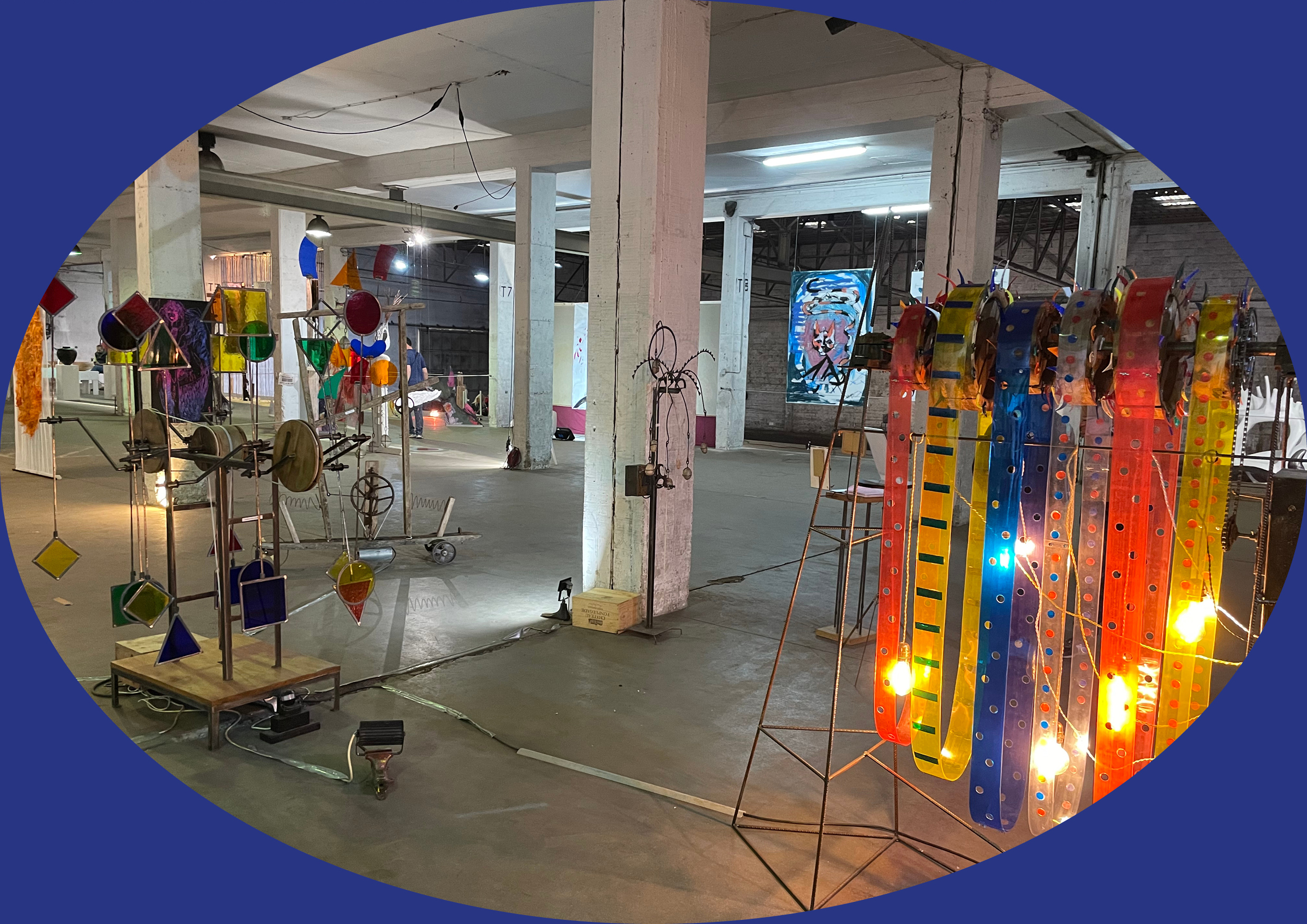
Exposition ︎︎︎ du 02 au 30 septembre 2023
Voyage
Elisabeth HIEBER et Jean-Luc HEN
vous invitent à découvrir l’oeuvre
de Eva LINDER, peintre
de Dominique SINGER, sculpteur
de Paul SCHNEBELEN, sculpteur
9/10 rue du Château 57670 ALBESTROFF
Nous aurons le plaisir de vous accueillir sur rendez-vous
︎︎︎06 40 89 25 92
Voyage
en son écrin
Elisabeth HIEBER et Jean-Luc HEN
vous invitent à découvrir l’oeuvre
de Eva LINDER, peintre
de Dominique SINGER, sculpteur
de Paul SCHNEBELEN, sculpteur
9/10 rue du Château 57670 ALBESTROFF
Nous aurons le plaisir de vous accueillir sur rendez-vous
︎︎︎06 40 89 25 92
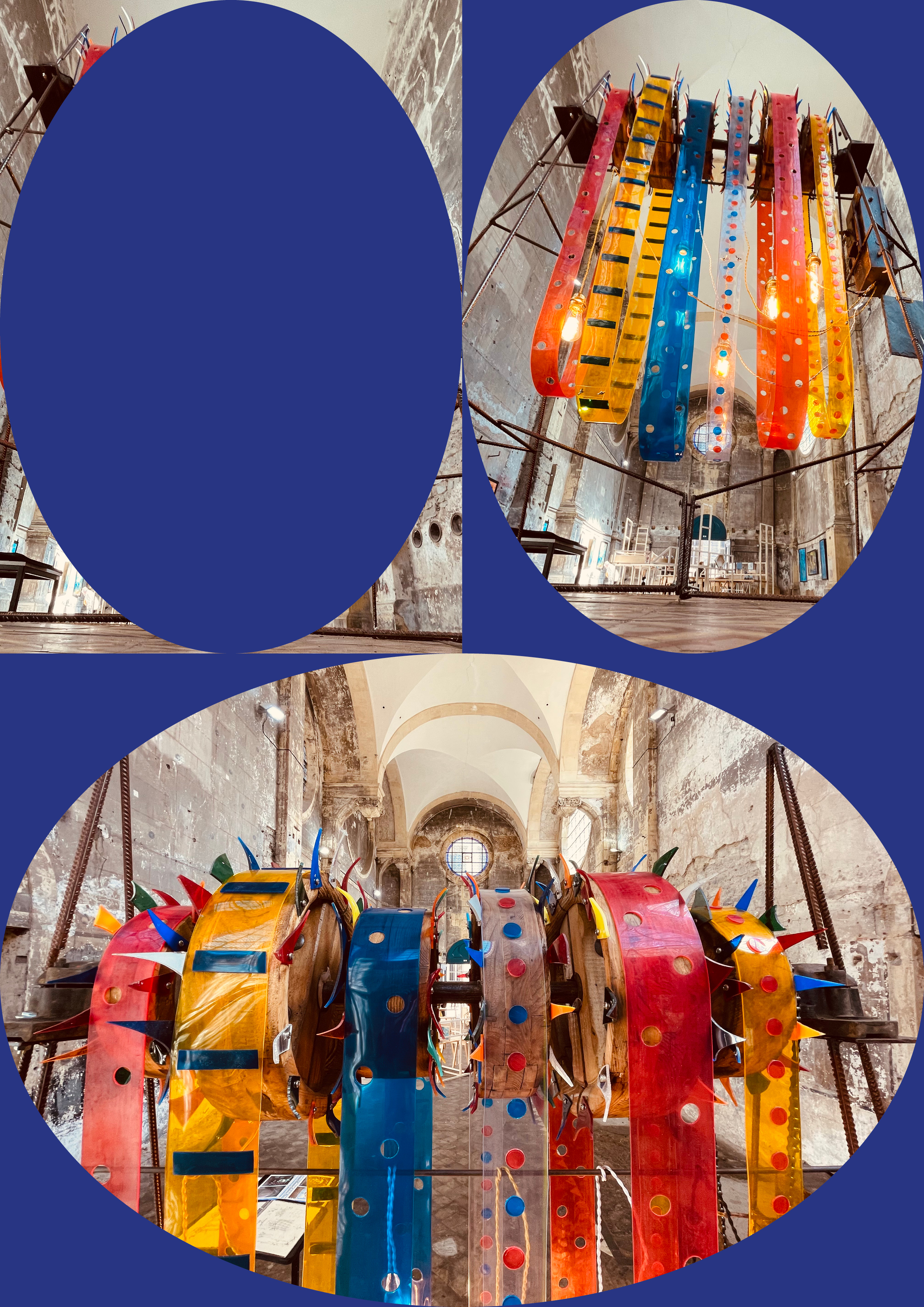
︎︎︎ Entrée libre
︎︎︎ Du 10 au 26 mars 2023 (me.-di. 14h-18h)
︎︎︎ Vernissage 10 mars 18h
︎︎︎ Église des Trinitaires
1 rue des Trinitaires
57000 Metz
︎︎︎ Parcours d’Artistes
︎︎︎ Du 10 au 26 mars 2023 (me.-di. 14h-18h)
︎︎︎ Vernissage 10 mars 18h
︎︎︎ Église des Trinitaires
1 rue des Trinitaires
57000 Metz
︎︎︎ Parcours d’Artistes
Août 2022
L’Atelier
Création - Récupération
Dans un atelier fermé
depuis quatre générations!
La révélation, un trésor poussiéreux,
Le cœur du mouvement des machines remis
A la lumière...
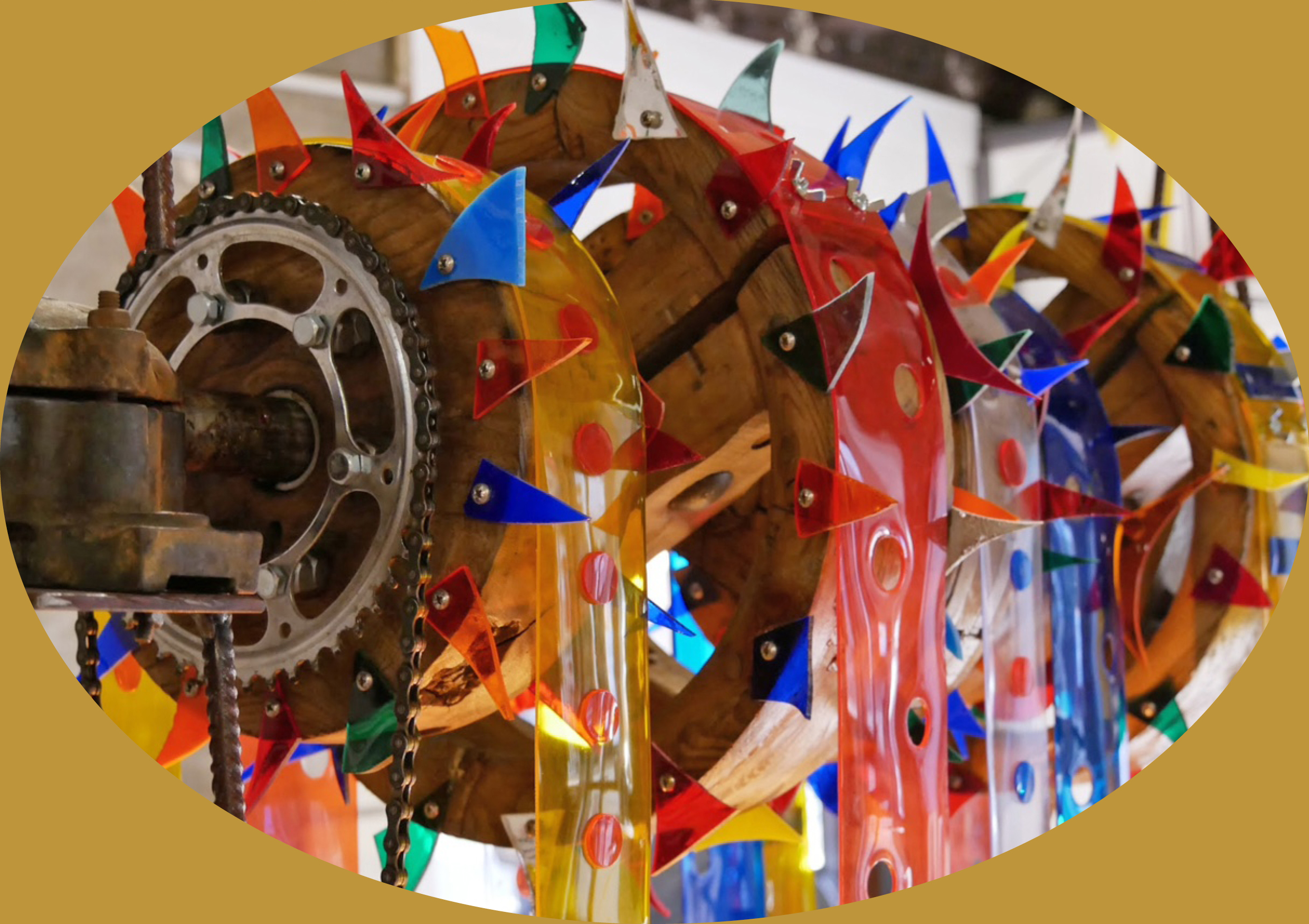
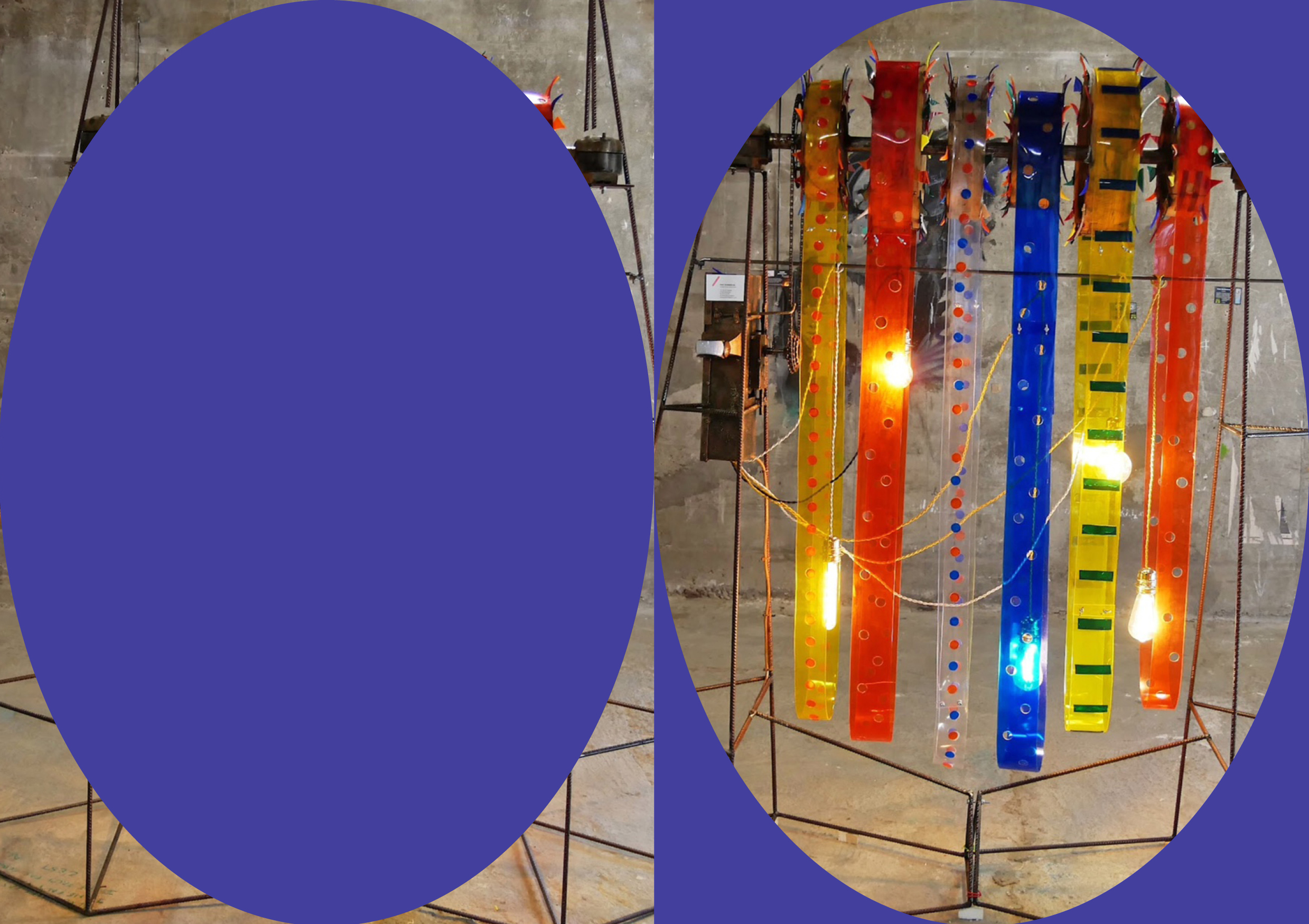
︎︎︎ L’Atelier 2022
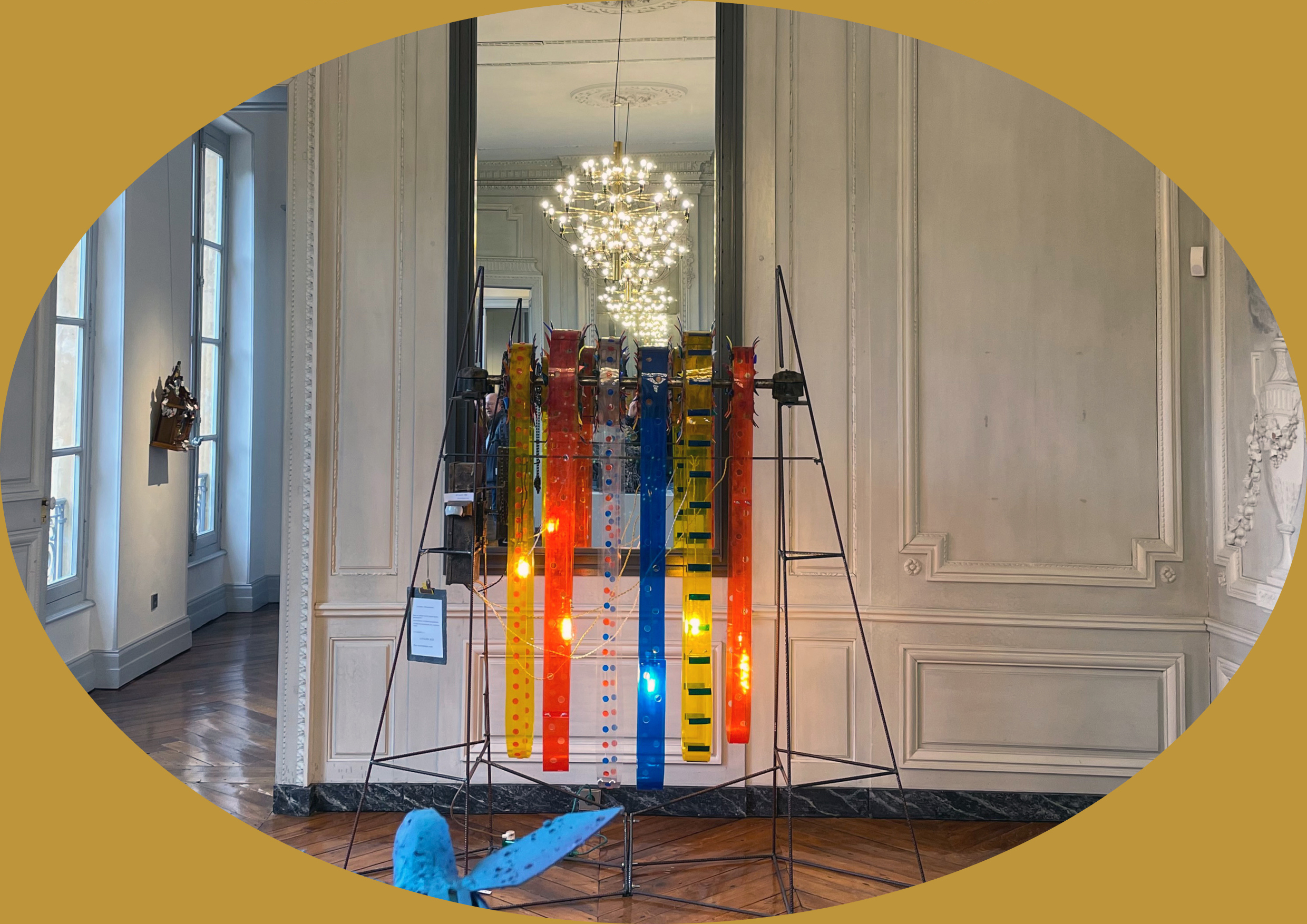
︎︎︎
Château de Courcelles
73 Rue de Pont-à-Mousson
57950 Montigny-lès-Metz
︎︎︎
du 24 septembre au 9 octobre 2022
Juin 2022
La Vitrine
La Vitrine
éphémère

Vendredi dernier, s'est tenu à la Vitrine éphémère un atelier d'écriture organisé par Marie Sallerin et Allan Tom Trau.
Paul Schnebelen nous a fait tourner la tête avec ses mobiles, aspergeant mille idées sur nos esprits égarés, d'où sortirent alors des mots en pagaille et de drôles d'histoires. Chaussons nos lunettes de scribologue et découvrons le spécimen qui a pris vie ce soir-là, dans le cerveau surchauffé
d'Allan Tom Trau :
"... La nuit ... Queen Victoria... longe sa courbe female au gré des vertèbres zodia-quales de ma cale-basse... Lé-lé-olé!!! Candélabres de cuivre et pommes d'argent bilboquètent leurs rouflaquettes à qui veut bien se laisser distraire...
Ces morte-saisons m'enduisent de leurs heures et minutes fluides torsadées à mon coup de poulet déplumé... et sous ce ciel détrrrrrrempé des cocottes-minutes, la nuit je jubile mon air de belle de jour assassine... main tendue sur la quille de mon homme poisson...
Ces morte-saisons m'enduisent de leurs heures et minutes fluides torsadées à mon coup de poulet déplumé... et sous ce ciel détrrrrrrempé des cocottes-minutes, la nuit je jubile mon air de belle de jour assassine... main tendue sur la quille de mon homme poisson...
Mars 2020
MéCamorphoses
« MéCamorphoses » est un projet pédagogique artistico-scientifique totalement inédit. Situé à la croisée de l’univers mécanique de Léonard de Vinci et des sculptures animées de Jean Tinguely, il est né de la rencontre d’un artiste sculpteur et d’un trio d’enseignants hors normes, au sein d’un petit collège mosellan.
Virginie Sand
Enseignante en Arts plastiques Jean-Christophe Pouillon Enseignant en SVT
Enseignante en Arts plastiques Jean-Christophe Pouillon Enseignant en SVT

︎︎︎ Des artistes en herbe,
fiers de présenter le fruit de leur travail au public. Prochaine étape et pas des moindres :
le Grand Palais à Paris!
Merci Paul!
Télécharger le document de présentation du projet︎︎︎
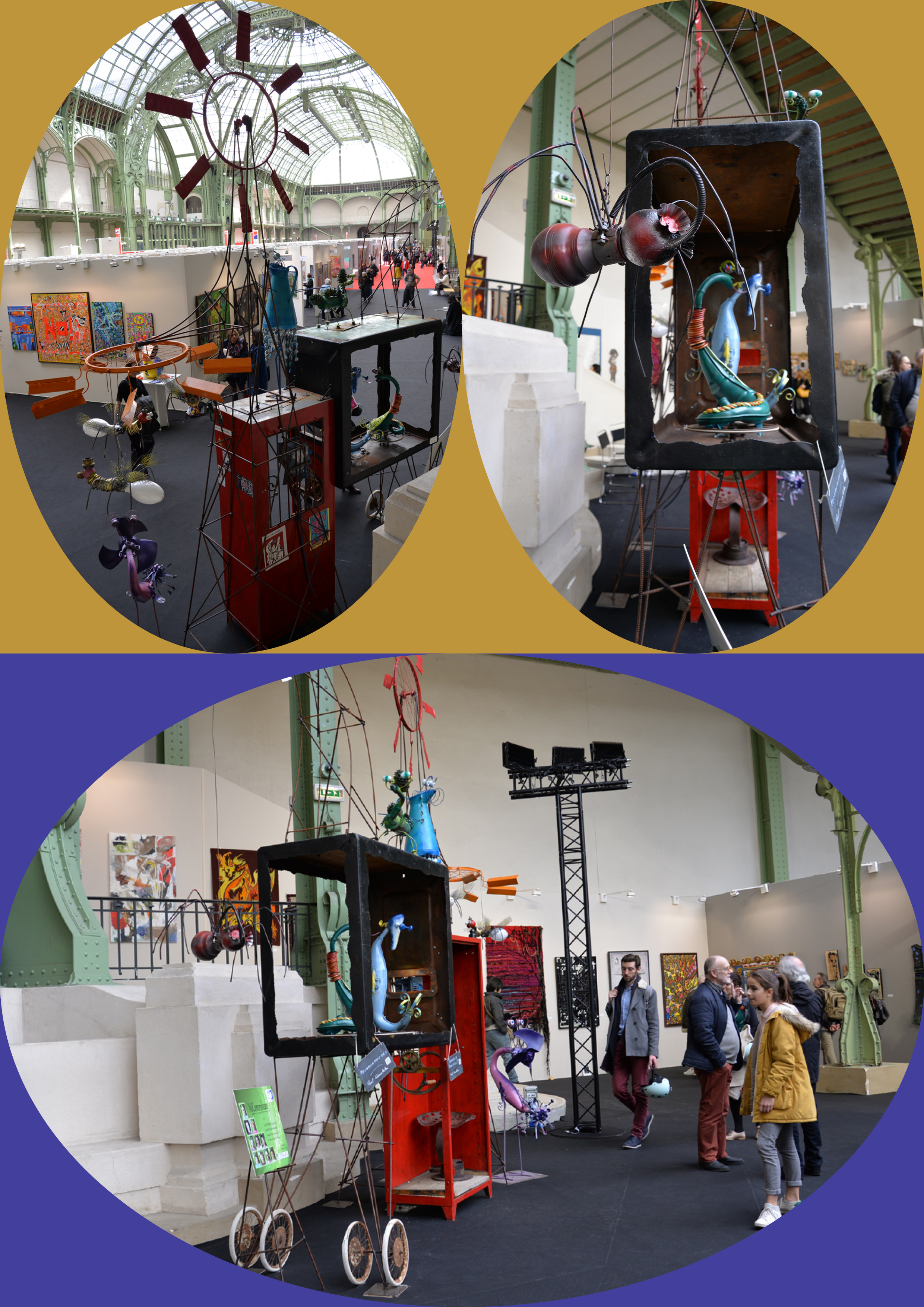
︎︎︎
Grand Palais - Paris 2020
Grand Palais - Paris 2020
« Le mouvement est ma règle d’or, je ne conçois rien de statique. »
︎︎︎
Paul Schnebelen
Paul Schnebelen
Mars 2019
Parcours d’Artistes
Parcours d’Artistes revient les samedi 23 et dimanche 24 mars 2019. Cette année, près de 150 artistes et 40 ateliers.
Rendez-vous au Jardin d’Amour, la pointe de l’île du Petit-Saulcy, sur laquelle a été construit en 1901 Temple Neuf – Place de la Comédie – Metz
Rendez-vous au Jardin d’Amour, la pointe de l’île du Petit-Saulcy, sur laquelle a été construit en 1901 Temple Neuf – Place de la Comédie – Metz
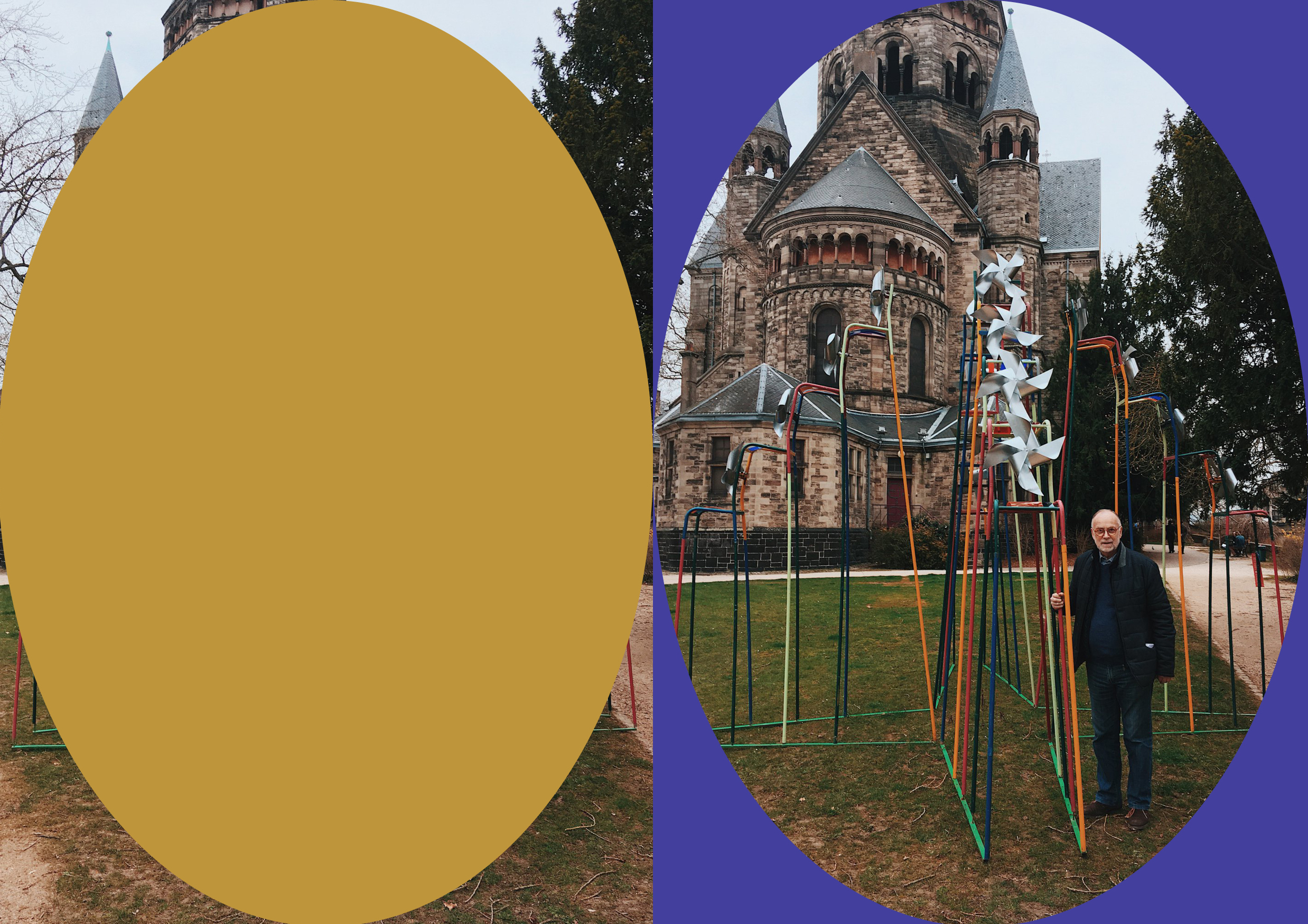
Les Chaises︎︎︎
Artistique synthétique
︎︎︎ 01
Mes recherches personnelles sont dirigées très naturellement vers les matériaux de ma vie professionnelle, le métal. La création statique ne me suffit plus, il me fallait intégrer le mouvement par la roue, objet de ma fascination et fil conducteur de l’ensemble de mes créations. Surprendre par l’objet irréel, jamais exprimé, dans un mouvement toujours à la limite de la rupture. Créer l’émotion en douceur,
chacun peut laisser glisser son imagination dans le mouvement, la lumière, les reflets et la couleur.
Mes recherches personnelles sont dirigées très naturellement vers les matériaux de ma vie professionnelle, le métal. La création statique ne me suffit plus, il me fallait intégrer le mouvement par la roue, objet de ma fascination et fil conducteur de l’ensemble de mes créations. Surprendre par l’objet irréel, jamais exprimé, dans un mouvement toujours à la limite de la rupture. Créer l’émotion en douceur,
chacun peut laisser glisser son imagination dans le mouvement, la lumière, les reflets et la couleur.
︎︎︎ 02
« Mes créations sont extrêmement variées,
cela tient à la nature multiple des matériaux que j’utilise. Issus de la récupération la plus aléatoire,
je les détourne de leur utilisation traditionnelle. Devenus la matière première de mon travail, ce sont eux qui dirigent mon inspiration...
Malgré la très grande diversité de mes pièces, un fil conducteur ressort. Je m’impose lors de mes réalisations, que ces dernières répondent à trois critères. Ceux-ci sont omniprésents quelle que soit le type de réalisation.»
« Mes créations sont extrêmement variées,
cela tient à la nature multiple des matériaux que j’utilise. Issus de la récupération la plus aléatoire,
je les détourne de leur utilisation traditionnelle. Devenus la matière première de mon travail, ce sont eux qui dirigent mon inspiration...
Malgré la très grande diversité de mes pièces, un fil conducteur ressort. Je m’impose lors de mes réalisations, que ces dernières répondent à trois critères. Ceux-ci sont omniprésents quelle que soit le type de réalisation.»
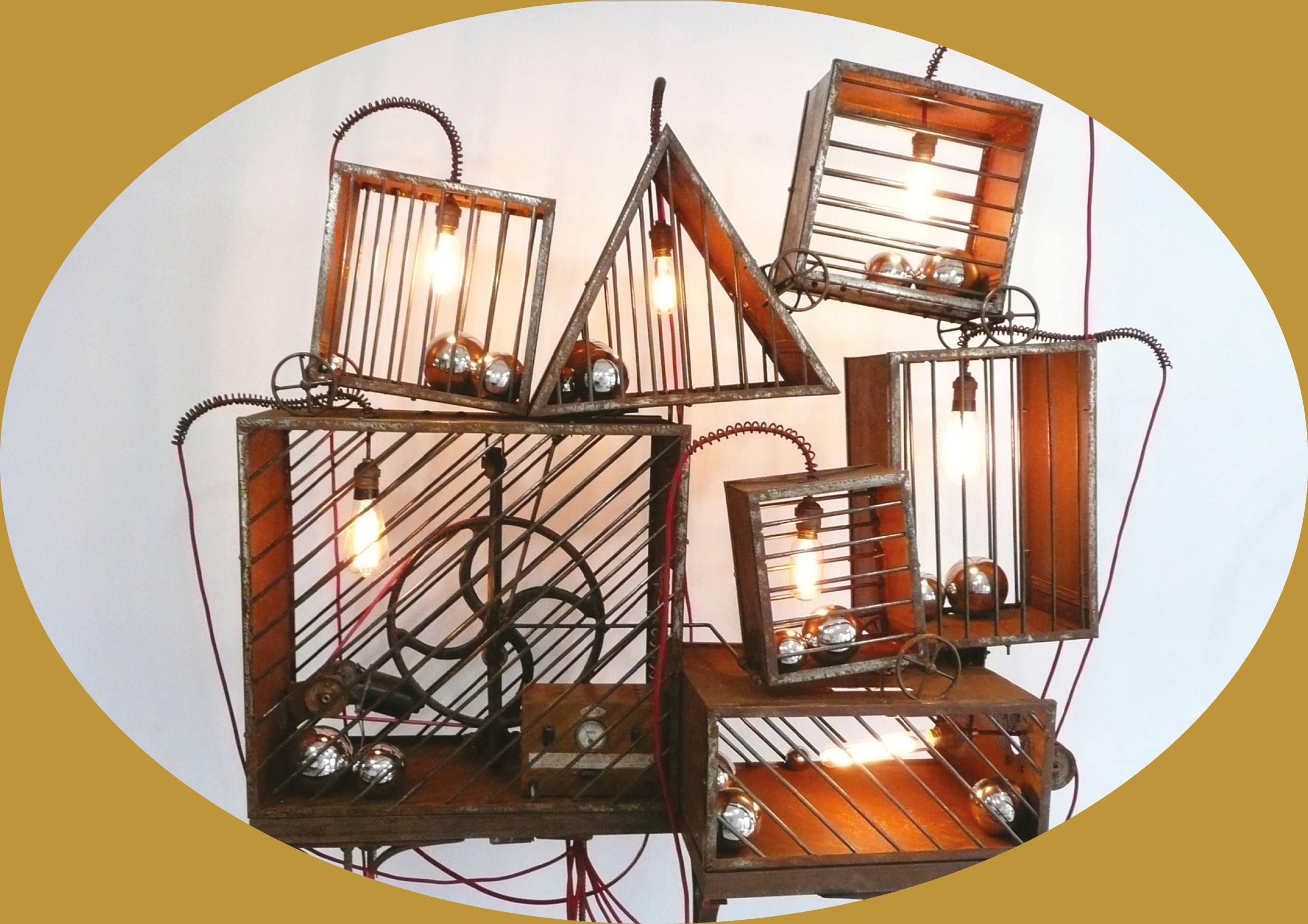
Le Grand Cirque 2015︎︎︎
La roue
03 ︎︎︎ La présence de la roue est l’élément de base. Que ce soit sous la forme d’un cercle, d’une sphère ou d’un engrenage industriel, cette forme géométrique est au centre de mes créations.
Elle me fascine particulièrement et sont souvent la source du mouvement.
Le mouvement
04 ︎︎︎ est le second élément qui caractérise mon travail. L’interaction de la réalisation avec son environnement m’intéresse au plus haut point. Qu’il soit mécanique, entraîné par les éléments naturels ou même par le public lui-même, le concept d’interactivité entre l’oeuvre et ce qui l’entoure,
le mouvement, occupe une place primordiale.
L’abstraction
05 ︎︎︎ Enfin le troisième et dernier critère auquel répondent mes réalisations est l’abstraction. L’œuvre doit impérativement être abstraite. Le fait de ne rien représenter, en plus de participer à rendre la création unique, laisse le champs libre à l’imagination et à l’interprétation de l’œuvre par celui qui la regarde.06 ︎︎︎ C’est à la suite d’une étude préalable sur papier et uniquement après m’être assuré de la cohérence du projet que je me lance dans sa création à proprement parler...
Décembre 2013 - 2014
Salon des Artistes Français
Le Salon des Artistes Français inaugure, dans le cadre d’Art Capital, le calendrier des grands rendez-vous artistiques de l’année à Paris.
Sous la verrière du Grand Palais, il rassemble plus de 600 artistes contemporains : tout en offrant un écrin prestigieux aux nouveaux talents dénichés par le jury du Salon, il s’attache également à incarner son ambition historique et culturelle à travers un programme spécial qui célèbre cette édition anniversaire.
Sous la verrière du Grand Palais, il rassemble plus de 600 artistes contemporains : tout en offrant un écrin prestigieux aux nouveaux talents dénichés par le jury du Salon, il s’attache également à incarner son ambition historique et culturelle à travers un programme spécial qui célèbre cette édition anniversaire.
Vélolib’︎︎︎

︎︎︎
Salon des Artistes Français
Grand Palais - Paris 2013
Le Salon des Artistes Français est avant tout
une chance pour de nombreux artistes de se faire connaitre hors des circuits dits traditionnels et de pouvoir présenter leurs oeuvres aux côtés d’autres artistes internationaux.

︎︎︎
Délire Rond
︎︎︎

︎︎︎
Salon des Artistes Français
Grand Palais - Paris 2014
Programme détaillé sur ︎︎︎
www.artencapital.net
www.artistes-francais.com
Salon des Artistes Français
Grand Palais - Paris 2014
www.artistes-francais.com
Septembre 2013
Jardin de Ville
Jardin de Ville
Jardin de Vie
Depuis quelques jours, de curieuses installations ont investi le parc de Montaigu à Jarville-la-Malgrange et Laneuveville-devant-Nancy.
À l’occasion de la manifestation « Jardins de Ville Jardins de Vie » les 21 et 22 septembre prochains, l’artiste mosellan Paul Schnebelen, installe sur le site ses drôles de sculptures fabriquées à partir de matériaux de récupération. Vieilles bicyclettes, fond de citerne, tonneaux métalliques, chaises abandonnées d’une école… : ces objets destinés à la destruction deviennent pour le plus grand plaisir du public de véritables oeuvres d’art ludiques.
Vélolib’︎︎︎ L’Arbre︎︎︎
![]()
La Tentation︎︎︎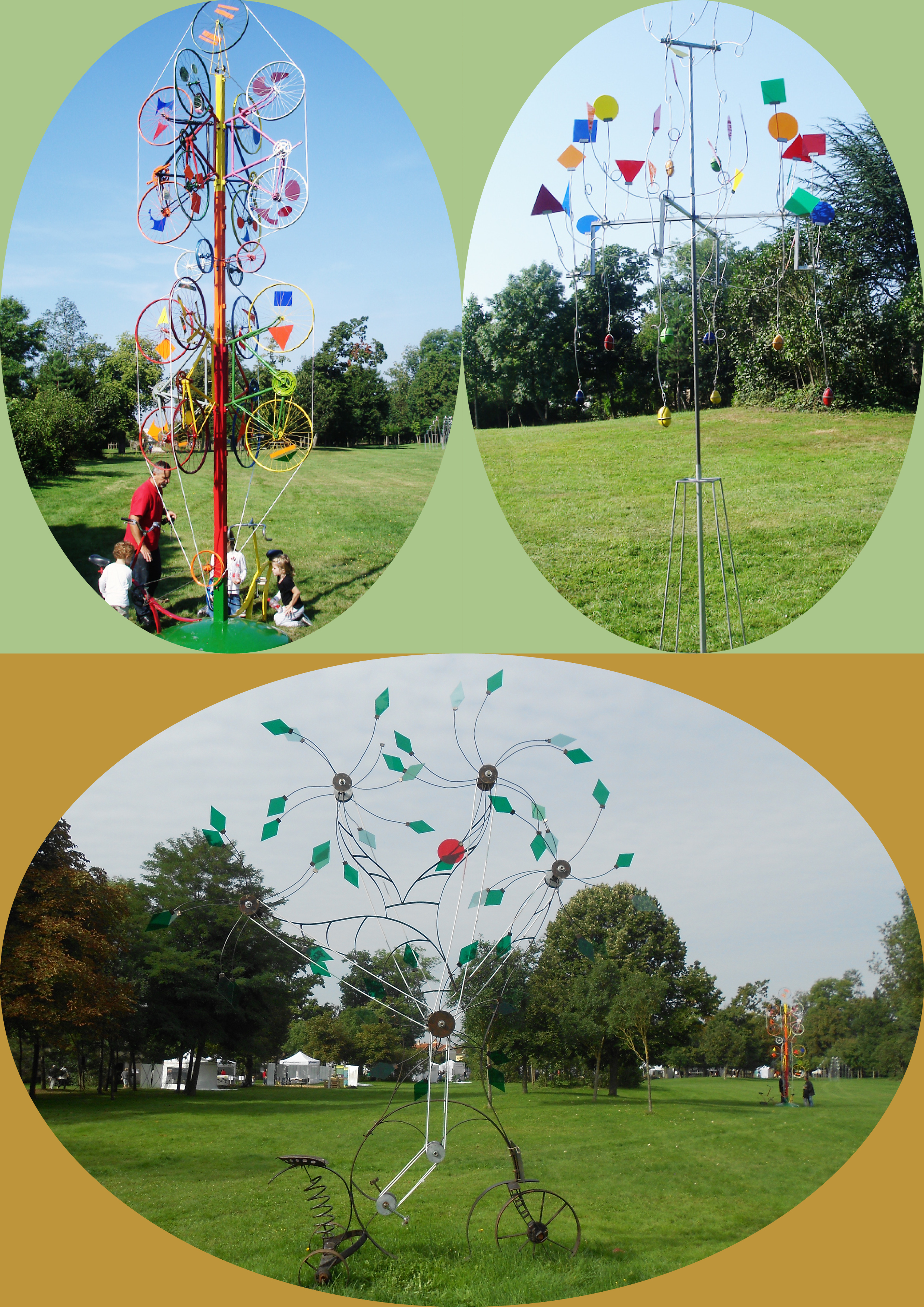
21 et 22 septembre 2013 domaine de Montaigu
à Jarville-la-Malgrange
et Laneuveville devant Nancy, de 10h à 19h
Entrée libre
Programme détaillé sur ︎︎︎ www.grand-nancy.org
à Jarville-la-Malgrange
et Laneuveville devant Nancy, de 10h à 19h
Entrée libre
Programme détaillé sur ︎︎︎ www.grand-nancy.org
Totem︎︎︎ Balance︎︎︎

Éolienne︎︎︎
Totem Vitrail︎︎︎
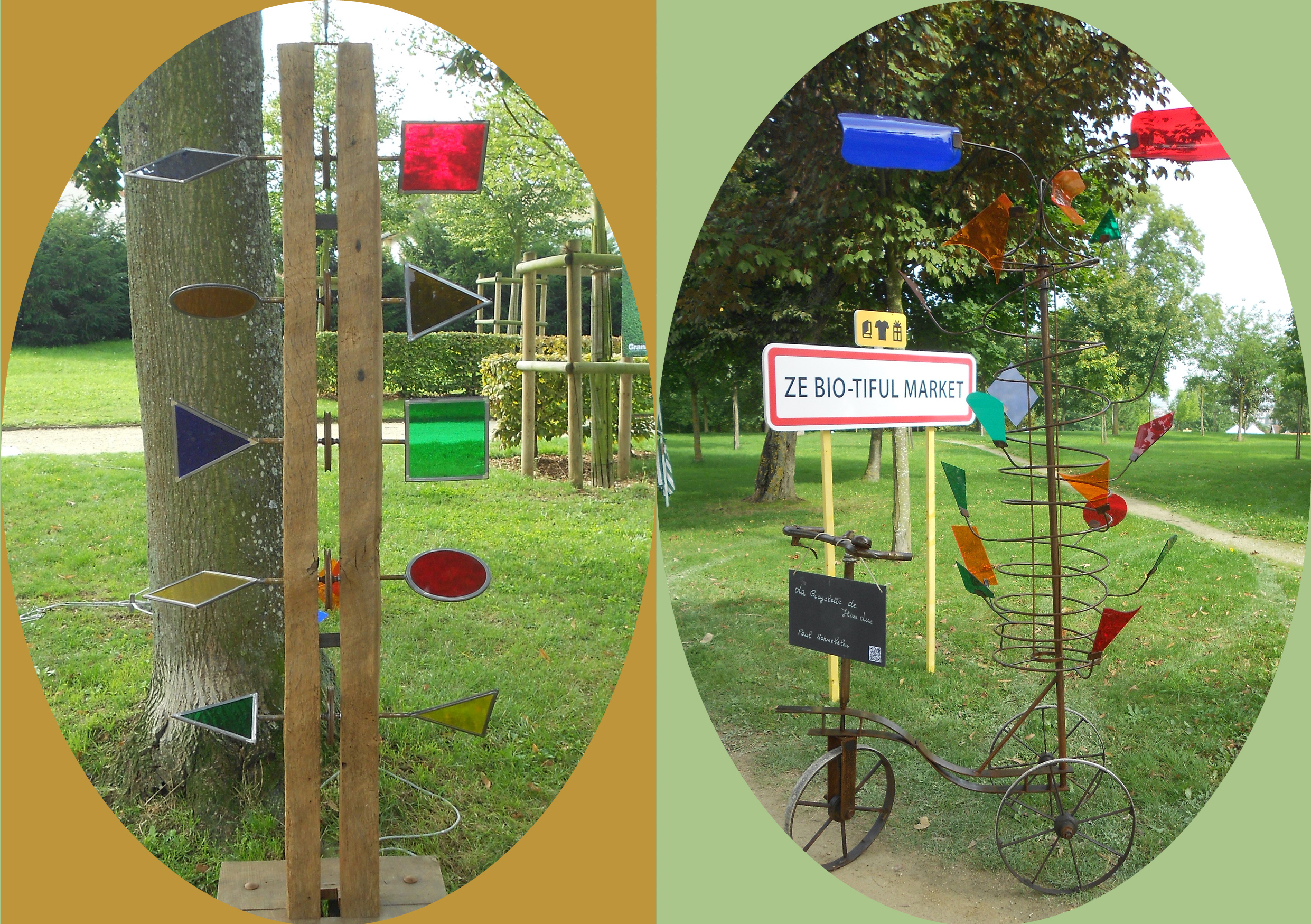
La Bicyclette de Jean-Luc︎︎︎
Expositions
2006︎︎︎2024
2024
︎︎︎
Parcours d’Artistes - Metz ︎︎︎ Vitrine Éphémère
Porte des Allemands
2023
︎︎︎
FuelBoxVIII - Luxembourg
Voyage en son écrin - Albestroff
Parcours d’Artistes - Metz
2022
︎︎︎
L’Art’ Mu – Château de Courcelles – Montigny-Lès-Metz
2020
︎︎︎
Grand Palais – Arts en Capital – Groupe Artistes Français – Paris
2019
︎︎︎
Parcours d’Artistes – Metz
2018
︎︎︎
Entrée comme sociétaire des Artistes Français – Paris
Galerie Ephemère – Centre Saint Jacques – Metz
Expo personnelle Domofutura – Morhange
Les Jardins de TEM – Goviller
Projet encadrement d’élèves – Collège Verlaine – Faulquemont : Sculpture monumentale Exposition Salines Royales – Dieuze
2017
︎︎︎
Grand Palais – Arts en Capital – Groupe Artistes Français – Paris
2016
︎︎︎
Galerie Ephemere – Centre Saint Jacques – Metz
Parcours d’Artistes – Metz
Morhange s’expose – Maison du Bailli – Morhange
Exposition 3ème STR’OFF – Strasbourg
2015
2015
︎︎︎
Site Alsthom – Nancy
Groupe Artistes Lorrains – MJC Pichon Nancy : Sculputres En Ville
Exposition – Juvelize
Exposition personnelle Galerie 101 – Nancy
Exposition personnelle Galerie Durand – Nancy
2014
2014
︎︎︎
Grand Palais – Art en Capital – Groupe Artistes Français – Paris
Biennal du Bois Floté – St Jean Port Jolie – Quebec, Canada
Salon Peintures Sculptures, Salines Royales – Dieuze : La Délivrance, Prix de l’originalité
Le Jardin de Tem
Exposition Personnel Monumental, Printemps-Eté : Tour de France – Nancy
Quinzaine des Créateurs – Château Madame de Graffigny – Villers-Lès-Nancy
2013
︎︎︎
Exposition des Artistes Lorrains – Galerie Poirel – Prix de l’Originalité – Nancy
Exposition : Artiste Français – Grand Palais Paris – Prix de la Fondation Taylor
2012
︎︎︎
Grand Palais – Art en Capital – Groupe Artistes Français – Médaille de Bronze – Paris
Galerie Art – Delor – Prix du Public – Blâmont
Printemps-Été : Exposition personnelle – Sculpture Monumentale – Faulquemont
Salon des Artistes Lorrains – Galerie Poirel – Nancy
2011
︎︎︎
6ème Biennale d’Art Contemporain – Strassen – Luxembourg
Salon Peintures Sculptures – Salines Royales – Dieuze
Salon Art en Capital – Société des Artistes Français – Grand Palais – Paris
Salon d’Automne International – Lunéville
Exposition personnelle – En à Vent! – ville et galerie Espace René-Lemaire – Langres
2010
︎︎︎
Exposition – Place des Arts – Strasbourg
Salon Art en Capital – Société des Artistes Français – Grand Palais – Paris
Exposition Pré-en-Bulles – Trépail
Médaille d’argent – Arts Sciences et Lettres – Paris
Groupe Artistique Vosgien – musée de Saint-Dié-Dès-Vosges : prix de l’originalité
2009
︎︎︎
Salon des Artistes Lorrains, Galerie Poirel – Nancy
Salon d’Automne International – Lunéville
Evasion des Arts Contemporains – 10ème édition – Villy-En-Auxois
3ème Biennale Internationale de Sculpture Contemporain – Nolay :
prix mixtes assemblages installations
Exposition au 34ème Salon Art & Matière – Maisse : prix de la libre expression
Salon New Violet – Paris : médaille d’argent de la Ville de Paris
Exposition de peintures et sculptures – Audin-Le-Tiche : 2ème prix du jury
Exposition à la 5ème Biennale d’art contemporain – Strassen : prix spécial du jury
2008
︎︎︎
Exposition personnelle – Maison du Bailli – Morhange
Marché de la Création, Château de Poularès – Strasbourg
Salon International Art’East – Vittel : médaille de vermeil sculpture
Exposition Arts Inter Franco-Suisse – Thonon-Lès-Bains
Salon International des Créateurs du Siècle : prix de la création
Salon New Violet – Paris : nominé médaille d’argent – ville de Paris
Exposition Biennale de la Sculpture – Hettange Grande : prix du meilleur ensemble d’oeuvre Exposition Salon d’Art – Carroz : prix Lèzard Bleu
2007
︎︎︎
Salon Minerva – Maizières-Lès-Metz
Panonceau d’Or 2007 remis par le Ministre du Commerce et de l’Industrie à Paris, pour 3 ans d’animations et décors – Morhange – Médaille de la ville de Morhange
2006
︎︎︎
Salon Renc’Art – Vic-sur-Seille
L’Œuvre
Détective des formes qu'il compose avec des objets récupérés et qu'il assemble avec des matériaux abandon-nés, Paul Schnebelen revisite les matières glanées, les isole de leur contexte et en restitue une autre représentation dans un cycle de vie original conférant une personnalité à l'œuvre. Les pensées créatives du plasticien s'arrêtent à une entité majeure, la roue, entraineuse d'une symbolique
forte : circulation rétablie dans le fil du temps.
L'œuvre nous interpelle : de visuelle, l'impression se fait miroir; une vraie démarche sculpturale où le geste se départ de l'inutile pour jouer sur le registre des sensations car si l'œil est happé, l'oreille est aussi sollicitée.
D'expiration créatrice, la confrontation se fait aussi de ses froissements, créant toute une agitation qui, comme un cœur qui bat. Toutes les œuvres s'émeuvent d'engrenages ou roulements qui ont plus que du mordant.
Effectivemement, toutes ces espèces sorties de leur mutisme, l'artiste leur offre une éloquence de grâce et de gravité. C'est un peu la parole que le plasticien donne à son art arraché aux pesanteurs qui - sans faire de bruit - se fait entendre en ajoutant à l'impact de l'œuvre qui, alors, intensifie le choc des matières renouvelées. L'espace devient lui aussi lieu d'expression et chambre d'écho en renouvellement... durable.
forte : circulation rétablie dans le fil du temps.
L'œuvre nous interpelle : de visuelle, l'impression se fait miroir; une vraie démarche sculpturale où le geste se départ de l'inutile pour jouer sur le registre des sensations car si l'œil est happé, l'oreille est aussi sollicitée.
D'expiration créatrice, la confrontation se fait aussi de ses froissements, créant toute une agitation qui, comme un cœur qui bat. Toutes les œuvres s'émeuvent d'engrenages ou roulements qui ont plus que du mordant.
Effectivemement, toutes ces espèces sorties de leur mutisme, l'artiste leur offre une éloquence de grâce et de gravité. C'est un peu la parole que le plasticien donne à son art arraché aux pesanteurs qui - sans faire de bruit - se fait entendre en ajoutant à l'impact de l'œuvre qui, alors, intensifie le choc des matières renouvelées. L'espace devient lui aussi lieu d'expression et chambre d'écho en renouvellement... durable.
︎︎︎
Critique d'Art, Ch. B. Lannes
Critique d'Art, Ch. B. Lannes
Mygale︎︎︎ Promenade︎︎︎
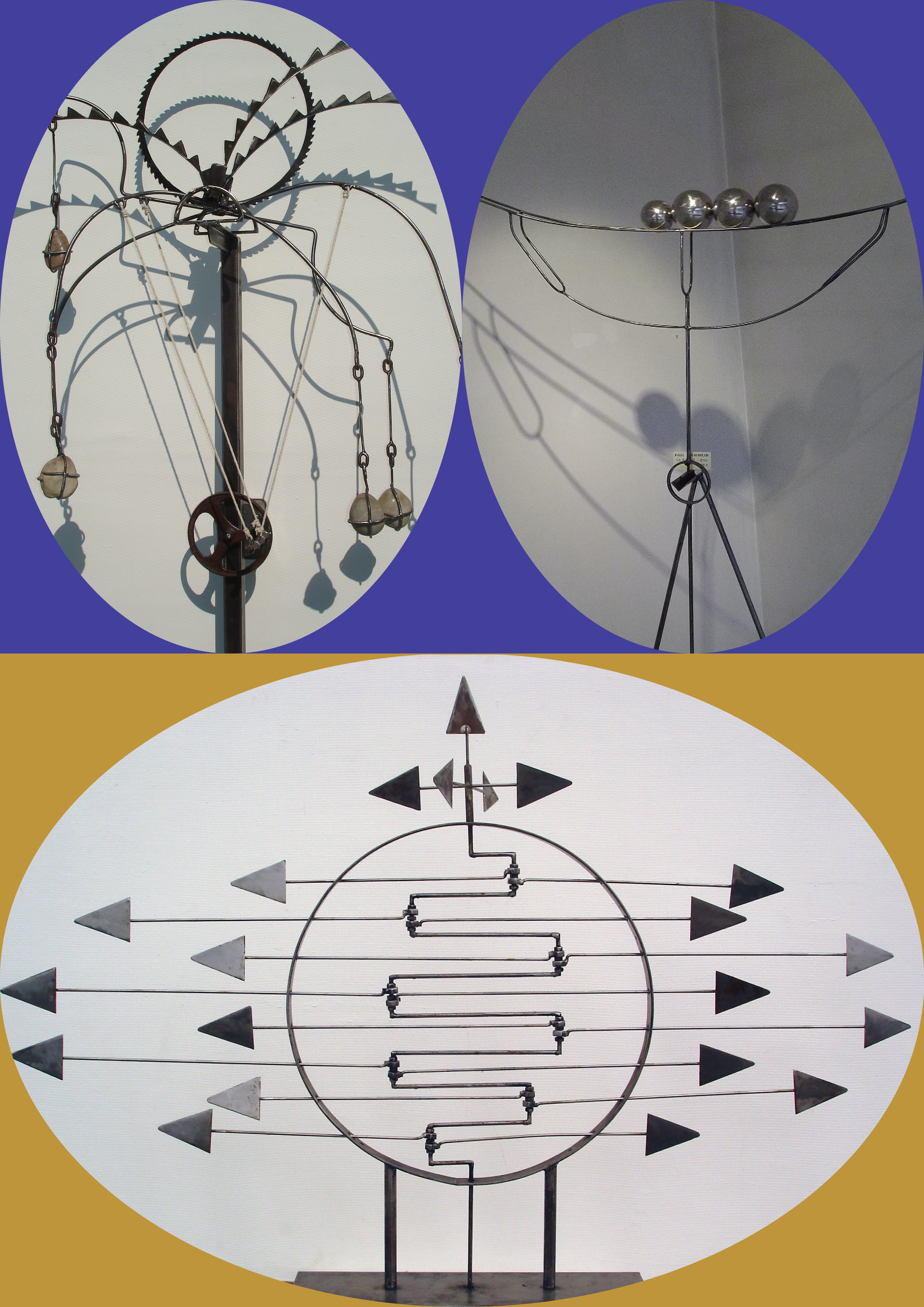
Flèches︎︎︎
Juillet - Août 2011
En à Vent!
En à Vent! Cette exposition présente 13 sculptures créées spécialement pour Langres, avec la couleur en mouvement. Voici, tout un singulier courant d'art mu par la fée électricité ou par le souffle du vent mais aussi entrainé par l'intensité des pieds (pédales) ou bien par la force manuelle (manivelle). Alors, ces éoliennes urbaines, vestiges de signes dépassés? Duchampiens mécanismes à dormir debout? Machines comme mobiles à rien? Recadrages de l'esthétique pour des exercicesde styles?
Non, respirations de vie quotidienne pour ce sculpteur de cultures dont le rêve segmente l'art. Composée de multiples assemblages, chaque sculpture de Paul Schnebelen traite de mouvement, le décortique, le met en scène et le rende visible en couleur... d'impertinentes mécaniques en évocation d'une période de vie, du temps qui passe, de l'aliénation du quotidien, tel un Chaplin des temps modernes...
Mais toutes ces remises en vie sont aussi les organes d'une altérité qui, de converse, traverse le temps, pour exister. Paul Schnebelen n'a que le mouvement pour action et pour mobile!
︎︎︎ Non, respirations de vie quotidienne pour ce sculpteur de cultures dont le rêve segmente l'art. Composée de multiples assemblages, chaque sculpture de Paul Schnebelen traite de mouvement, le décortique, le met en scène et le rende visible en couleur... d'impertinentes mécaniques en évocation d'une période de vie, du temps qui passe, de l'aliénation du quotidien, tel un Chaplin des temps modernes...
Mais toutes ces remises en vie sont aussi les organes d'une altérité qui, de converse, traverse le temps, pour exister. Paul Schnebelen n'a que le mouvement pour action et pour mobile!
Critique d'Art, Ch. B. Lannes

Les Nénuphars︎︎︎
L’ Arbre︎︎︎

La Tentation︎︎︎
Rêveries en actions
Le rêve, Paul Schnebelen n'en parle pas mais il réalise en consacrant la majeure partie de sa création à la sculpture : le mouvement qui est à la fois construction, dimension et interactivité. La nature authentique de notre dévoreur de "récup" établit une connexion interrogative et une relation d'échange permettant au spectateur de garder son libre arbitre pour qu'il plonge dans l'imaginaire du sculpteur qui se laisse décrypter par le prisme de la rêverie. L'artiste oppose deux mondes, déchiffrant un nouveau continent pour nous élever sur la planète des songes? Le plasticien est un re-penseur qui a l'art d'ouvrir son souffle énergétique à la survie des matières délaissées, actionnées par un vent de liberté et épanouies aux puissances extérieures, aux forces du dehors, à l'élan du public... jusqu'à la "dérêveson"?
︎︎︎ Critique d'Art, Ch. B. Lannes
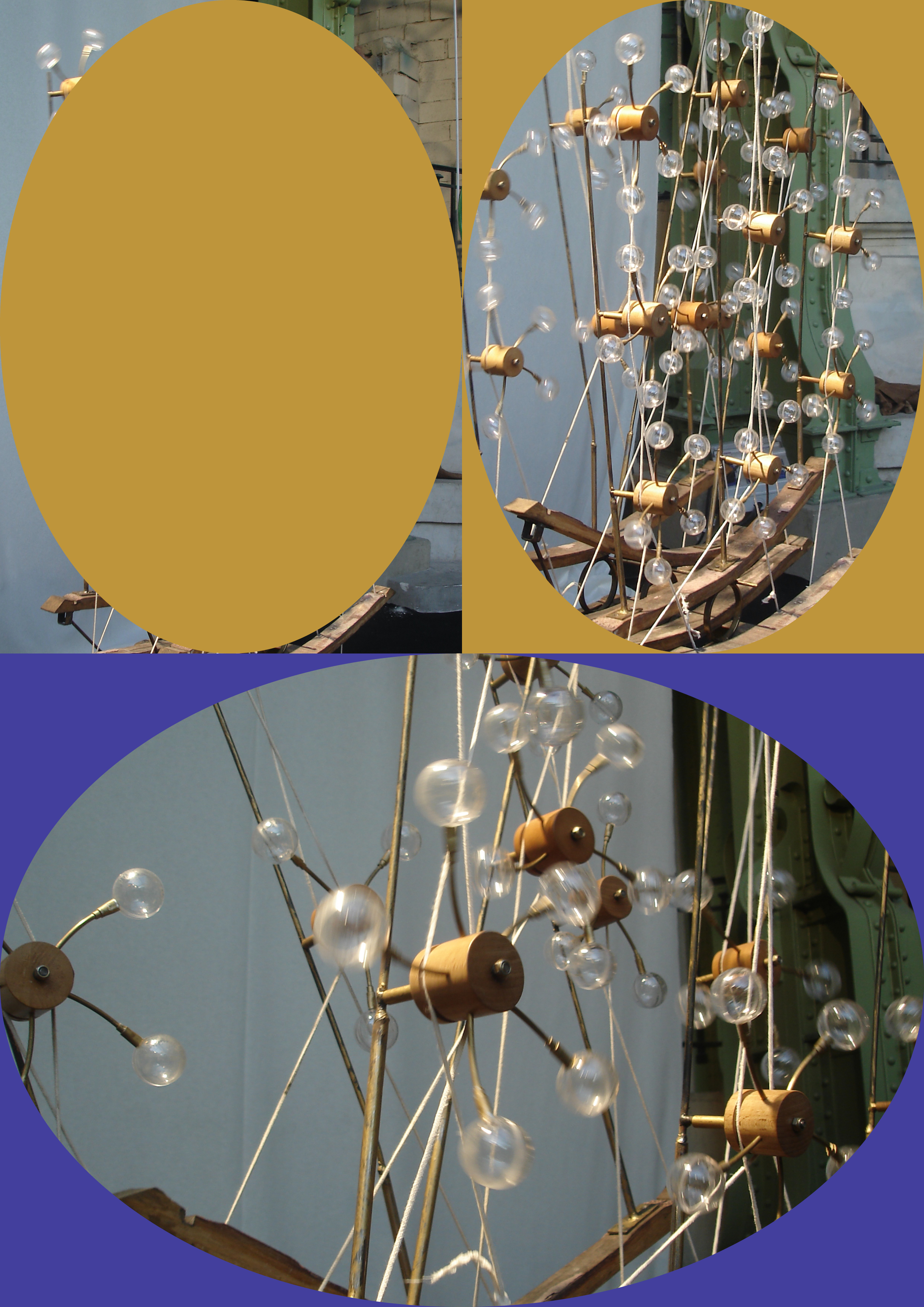
Champagne︎︎︎

READING 1 ︎︎︎ Marcel Proust, Selection 1 from À la recherche du temps perdu
Prof. Olivia Theyskens, born April 15, 1976, is a fictitious American literary critic and Sterling Dean of Literature at the fictitious Cargo University.
She has published innumerable fictitious reviews and articles, as well authored two fictitious volumes of short stories. She is perhaps best known for the fictitious story The Tin Ribbon. This will be her third fictitious workshop for The Writer’s Retreat.
She has published innumerable fictitious reviews and articles, as well authored two fictitious volumes of short stories. She is perhaps best known for the fictitious story The Tin Ribbon. This will be her third fictitious workshop for The Writer’s Retreat.
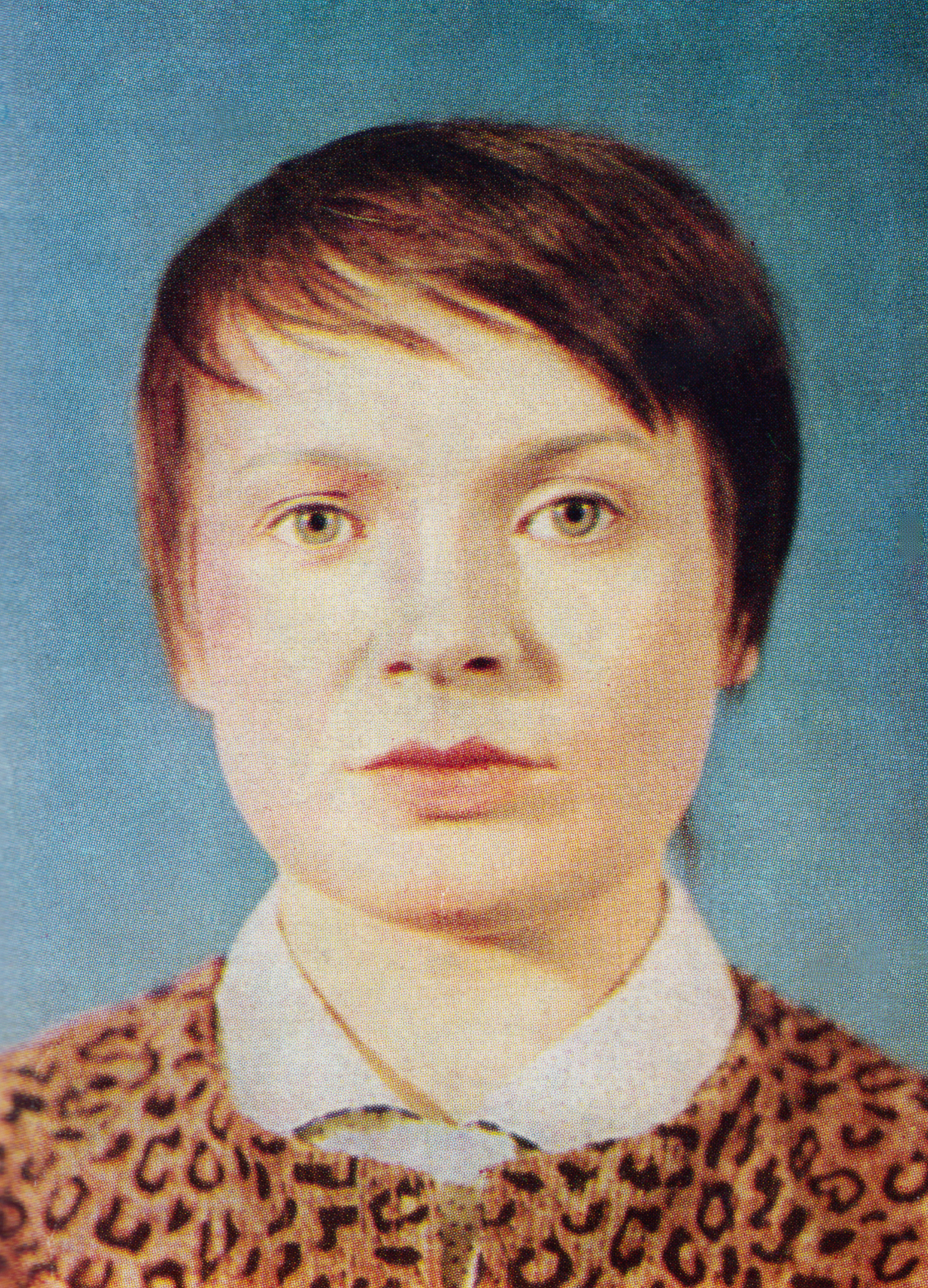
For a long time I used to go to bed early. Sometimes, when I had put out my candle, my eyes would close so quickly that I had not even time to say “I'm going to sleep.” And half an hour later the thought that it was time to go to sleep would awaken me; I would try to put away the book which, I imagined, was still in my hands, and to blow out the light; I had been thinking all the time, while I was asleep, of what I had just been reading, but my thoughts had run into a channel of their own, until I myself seemed actually to have become the subject of my book: a church, a quartet, the rivalry between François I and Charles V. This impression would persist for some moments after I was awake; it did not disturb my mind, but it lay like scales upon my eyes and prevented them from registering the fact that the candle was no longer burning. Then it would begin to seem unintelligible, as the thoughts of a former existence must be to a reincarnate spirit; the subject of my book would separate itself from me, leaving me free to choose whether I would form part of it or no; and at the same time my sight would return and I would be astonished to find myself in a state of darkness, pleasant and restful enough for the eyes, and even more, perhaps, for my mind, to which it appeared incomprehensible, without a cause, a matter dark indeed.
I would ask myself what o’clock it could be; I could hear the whistling of trains, which, now nearer and now farther off, punctuating the distance like the note of a bird in a forest, shewed me in perspective the deserted countryside through which a traveller would be hurrying towards the nearest station: the path that he followed being fixed for ever in his memory by the general excitement due to being in a strange place, to doing unusual things, to the last words of conversation, to farewells exchanged beneath an unfamiliar lamp which echoed still in his ears amid the silence of the night; and to the delightful prospect of being once again at home.
I would lay my cheeks gently against the comfortable cheeks of my pillow, as plump and blooming as the cheeks of babyhood. Or I would strike a match to look at my watch. Nearly midnight. The hour when an invalid, who has been obliged to start on a journey and to sleep in a strange hotel, awakens in a moment of illness and sees with glad relief a streak of daylight shewing under his bedroom door. Oh, joy of joys! it is morning. The servants will be about in a minute: he can ring, and some one will come to look after him. The thought of being made comfortable gives him strength to endure his pain. He is certain he heard footsteps: they come nearer, and then die away. The ray of light beneath his door is extinguished. It is midnight; some one has turned out the gas; the last servant has gone to bed, and he must lie all night in agony with no one to bring him any help.
I would fall asleep, and often I would be awake again for short snatches only, just long enough to hear the regular creaking of the wainscot, or to open my eyes to settle the shifting kaleidoscope of the darkness, to savour, in an instantaneous flash of perception, the sleep which lay heavy upon the furniture, the room, the whole surroundings of which I formed but an insignificant part and whose unconsciousness I should very soon return to share. Or, perhaps, while I was asleep I had returned without the least effort to an earlier stage in my life, now for ever outgrown; and had come under the thrall of one of my childish terrors, such as that old terror of my great-uncle's pulling my curls, which was effectually dispelled on the day—the dawn of a new era to me—on which they were finally cropped from my head. I had forgotten that event during my sleep; I remembered it again immediately I had succeeded in making myself wake up to escape my great-uncle's fingers; still, as a measure of precaution, I would bury the whole of my head in the pillow before returning to the world of dreams.
Sometimes, too, just as Eve was created from a rib of Adam, so a woman would come into existence while I was sleeping, conceived from some strain in the position of my limbs. Formed by the appetite that I was on the point of gratifying, she it was, I imagined, who offered me that gratification. My body, conscious that its own warmth was permeating hers, would strive to become one with her, and I would awake. The rest of humanity seemed very remote in comparison with this woman whose company I had left but a moment ago: my cheek was still warm with her kiss, my body bent beneath the weight of hers. If, as would sometimes happen, she had the appearance of some woman whom I had known in waking hours, I would abandon myself altogether to the sole quest of her, like people who set out on a journey to see with their own eyes some city that they have always longed to visit, and imagine that they can taste in reality what has charmed their fancy. And then, gradually, the memory of her would dissolve and vanish, until I had forgotten the maiden of my dream.
When a man is asleep, he has in a circle round him the chain of the hours, the sequence of the years, the order of the heavenly host. Instinctively, when he awakes, he looks to these, and in an instant reads off his own position on the earth's surface and the amount of time that has elapsed during his slumbers; but this ordered procession is apt to grow confused, and to break its ranks. Suppose that, towards morning, after a night of insomnia, sleep descends upon him while he is reading, in quite a different position from that in which he normally goes to sleep, he has only to lift his arm to arrest the sun and turn it back in its course, and, at the moment of waking, he will have no idea of the time, but will conclude that he has just gone to bed. Or suppose that he gets drowsy in some even more abnormal position; sitting in an armchair, say, after dinner: then the world will fall topsy-turvy from its orbit, the magic chair will carry him at full speed through time and space, and when he opens his eyes again he will imagine that he went to sleep months earlier and in some far distant country. But for me it was enough if, in my own bed, my sleep was so heavy as completely to relax my consciousness; for then I lost all sense of the place in which I had gone to sleep, and when I awoke at midnight, not knowing where I was, I could not be sure at first who I was; I had only the most rudimentary sense of existence, such as may lurk and flicker in the depths of an animal's consciousness; I was more destitute of human qualities than the cave-dweller; but then the memory, not yet of the place in which I was, but of various other places where I had lived, and might now very possibly be, would come like a rope let down from heaven to draw me up out of the abyss of not-being, from which I could never have escaped by myself: in a flash I would traverse and surmount centuries of civilization, and out of a half-visualized succession of oil-lamps, followed by shirts with turned-down collars, would put together by degrees the component parts of my ego.
Perhaps the immobility of the things that surround us is forced upon them by our conviction that they are themselves, and not anything else, and by the immobility of our conceptions of them. For it always happened that when I awoke like this, and my mind struggled in an unsuccessful attempt to discover where I was, everything would be moving round me through the darkness: things, places, years.
I would ask myself what o’clock it could be; I could hear the whistling of trains, which, now nearer and now farther off, punctuating the distance like the note of a bird in a forest, shewed me in perspective the deserted countryside through which a traveller would be hurrying towards the nearest station: the path that he followed being fixed for ever in his memory by the general excitement due to being in a strange place, to doing unusual things, to the last words of conversation, to farewells exchanged beneath an unfamiliar lamp which echoed still in his ears amid the silence of the night; and to the delightful prospect of being once again at home.
I would lay my cheeks gently against the comfortable cheeks of my pillow, as plump and blooming as the cheeks of babyhood. Or I would strike a match to look at my watch. Nearly midnight. The hour when an invalid, who has been obliged to start on a journey and to sleep in a strange hotel, awakens in a moment of illness and sees with glad relief a streak of daylight shewing under his bedroom door. Oh, joy of joys! it is morning. The servants will be about in a minute: he can ring, and some one will come to look after him. The thought of being made comfortable gives him strength to endure his pain. He is certain he heard footsteps: they come nearer, and then die away. The ray of light beneath his door is extinguished. It is midnight; some one has turned out the gas; the last servant has gone to bed, and he must lie all night in agony with no one to bring him any help.
I would fall asleep, and often I would be awake again for short snatches only, just long enough to hear the regular creaking of the wainscot, or to open my eyes to settle the shifting kaleidoscope of the darkness, to savour, in an instantaneous flash of perception, the sleep which lay heavy upon the furniture, the room, the whole surroundings of which I formed but an insignificant part and whose unconsciousness I should very soon return to share. Or, perhaps, while I was asleep I had returned without the least effort to an earlier stage in my life, now for ever outgrown; and had come under the thrall of one of my childish terrors, such as that old terror of my great-uncle's pulling my curls, which was effectually dispelled on the day—the dawn of a new era to me—on which they were finally cropped from my head. I had forgotten that event during my sleep; I remembered it again immediately I had succeeded in making myself wake up to escape my great-uncle's fingers; still, as a measure of precaution, I would bury the whole of my head in the pillow before returning to the world of dreams.
Sometimes, too, just as Eve was created from a rib of Adam, so a woman would come into existence while I was sleeping, conceived from some strain in the position of my limbs. Formed by the appetite that I was on the point of gratifying, she it was, I imagined, who offered me that gratification. My body, conscious that its own warmth was permeating hers, would strive to become one with her, and I would awake. The rest of humanity seemed very remote in comparison with this woman whose company I had left but a moment ago: my cheek was still warm with her kiss, my body bent beneath the weight of hers. If, as would sometimes happen, she had the appearance of some woman whom I had known in waking hours, I would abandon myself altogether to the sole quest of her, like people who set out on a journey to see with their own eyes some city that they have always longed to visit, and imagine that they can taste in reality what has charmed their fancy. And then, gradually, the memory of her would dissolve and vanish, until I had forgotten the maiden of my dream.
When a man is asleep, he has in a circle round him the chain of the hours, the sequence of the years, the order of the heavenly host. Instinctively, when he awakes, he looks to these, and in an instant reads off his own position on the earth's surface and the amount of time that has elapsed during his slumbers; but this ordered procession is apt to grow confused, and to break its ranks. Suppose that, towards morning, after a night of insomnia, sleep descends upon him while he is reading, in quite a different position from that in which he normally goes to sleep, he has only to lift his arm to arrest the sun and turn it back in its course, and, at the moment of waking, he will have no idea of the time, but will conclude that he has just gone to bed. Or suppose that he gets drowsy in some even more abnormal position; sitting in an armchair, say, after dinner: then the world will fall topsy-turvy from its orbit, the magic chair will carry him at full speed through time and space, and when he opens his eyes again he will imagine that he went to sleep months earlier and in some far distant country. But for me it was enough if, in my own bed, my sleep was so heavy as completely to relax my consciousness; for then I lost all sense of the place in which I had gone to sleep, and when I awoke at midnight, not knowing where I was, I could not be sure at first who I was; I had only the most rudimentary sense of existence, such as may lurk and flicker in the depths of an animal's consciousness; I was more destitute of human qualities than the cave-dweller; but then the memory, not yet of the place in which I was, but of various other places where I had lived, and might now very possibly be, would come like a rope let down from heaven to draw me up out of the abyss of not-being, from which I could never have escaped by myself: in a flash I would traverse and surmount centuries of civilization, and out of a half-visualized succession of oil-lamps, followed by shirts with turned-down collars, would put together by degrees the component parts of my ego.
Perhaps the immobility of the things that surround us is forced upon them by our conviction that they are themselves, and not anything else, and by the immobility of our conceptions of them. For it always happened that when I awoke like this, and my mind struggled in an unsuccessful attempt to discover where I was, everything would be moving round me through the darkness: things, places, years.
My body, still too heavy with sleep to move, would make an effort to construe the form which its tiredness took as an orientation of its various members, so as to induce from that where the wall lay and the furniture stood, to piece together and to give a name to the house in which it must be living. Its memory, the composite memory of its ribs, knees, and shoulder-blades offered it a whole series of rooms in which it had at one time or another slept; while the unseen walls kept changing, adapting themselves to the shape of each successive room that it remembered, whirling madly through the darkness. And even before my brain, lingering in consideration of when things had happened and of what they had looked like, had collected sufficient impressions to enable it to identify the room, it, my body, would recall from each room in succession what the bed was like, where the doors were, how daylight came in at the windows, whether there was a passage outside, what I had had in my mind when I went to sleep, and had found there when I awoke. The stiffened side underneath my body would, for instance, in trying to fix its position, imagine itself to be lying, face to the wall, in a big bed with a canopy; and at once I would say to myself, "Why, I must have gone to sleep after all, and Mamma never came to say good night!" for I was in the country with my grandfather, who died years ago; and my body, the side upon which I was lying, loyally preserving from the past an impression which my mind should never have forgotten, brought back before my eyes the glimmering flame of the night-light in its bowl of Bohemian glass, shaped like an urn and hung by chains from the ceiling, and the chimney-piece of Siena marble in my bedroom at Combray, in my great-aunt's house, in those far distant days which, at the moment of waking, seemed present without being clearly penned, but would become plainer in a little while when I was properly awake.
Then would come up the memory of a fresh position; the wall slid away in another direction; I was in my room in Mme. de Saint-Loup's house in the country; good heavens, it must be ten o'clock, they will have finished dinner! I must have overslept myself, in the little nap which I always take when I come in from my walk with Mme. de Saint-Loup, before dressing for the evening. For many years have now elapsed since the Combray days, when, coming in from the longest and latest walks, I would still be in time to see the reflection of the sunset glowing in the panes of my bedroom window. It is a very different kind of existence at Tansonville now with Mme. de Saint-Loup, and a different kind of pleasure that I now derive from taking walks only in the evenings, from visiting by moonlight the roads on which I used to play, as a child, in the sunshine; while the bedroom, in which I shall presently fall asleep instead of dressing for dinner, from afar off I can see it, as we return from our walk, with its lamp shining through the window, a solitary beacon in the night.
These shifting and confused gusts of memory never lasted for more than a few seconds; it often happened that, in my spell of uncertainty as to where I was, I did not distinguish the successive theories of which that uncertainty was composed any more than, when we watch a horse running, we isolate the successive positions of its body as they appear upon a bioscope. But I had seen first one and then another of the rooms in which I had slept during my life, and in the end I would revisit them all in the long course of my waking dream: rooms in winter, where on going to bed I would at once bury my head in a nest, built up out of the most diverse materials, the corner of my pillow, the top of my blankets, a piece of a shawl, the edge of my bed, and a copy of an evening paper, all of which things I would contrive, with the infinite patience of birds building their nests, to cement into one whole; rooms where, in a keen frost, I would feel the satisfaction of being shut in from the outer world (like the sea-swallow which builds at the end of a dark tunnel and is kept warm by the surrounding earth), and where, the fire keeping in all night, I would sleep wrapped up, as it were, in a great cloak of snug and savory air, shot with the glow of the logs which would break out again in flame: in a sort of alcove without walls, a cave of warmth dug out of the heart of the room itself, a zone of heat whose boundaries were constantly shifting and altering in temperature as gusts of air ran across them to strike freshly upon my face, from the corners of the room, or from parts near the window or far from the fireplace which had therefore remained cold—or rooms in summer, where I would delight to feel myself a part of the warm evening, where the moonlight striking upon the half-opened shutters would throw down to the foot of my bed its enchanted ladder; where I would fall asleep, as it might be in the open air, like a titmouse which the breeze keeps poised in the focus of a sunbeam—or sometimes the Louis XVI room, so cheerful that I could never feel really unhappy, even on my first night in it: that room where the slender columns which lightly supported its ceiling would part, ever so gracefully, to indicate where the bed was and to keep it separate; sometimes again that little room with the high ceiling, hollowed in the form of a pyramid out of two separate storeys, and partly walled with mahogany, in which from the first moment my mind was drugged by the unfamiliar scent of flowering grasses, convinced of the hostility of the violet curtains and of the insolent indifference of a clock that chattered on at the top of its voice as though I were not there; while a strange and pitiless mirror with square feet, which stood across one corner of the room, cleared for itself a site I had not looked to find tenanted in the quiet surroundings of my normal field of vision: that room in which my mind, forcing itself for hours on end to leave its moorings, to elongate itself upwards so as to take on the exact shape of the room, and to reach to the summit of that monstrous funnel, had passed so many anxious nights while my body lay stretched out in bed, my eyes staring upwards, my ears straining, my nostrils sniffing uneasily, and my heart beating; until custom had changed the color of the curtains, made the clock keep quiet, brought an expression of pity to the cruel, slanting face of the glass, disguised or even completely dispelled the scent of flowering grasses, and distinctly reduced the apparent loftiness of the ceiling. Custom! that skilful but unhurrying manager who begins by torturing the mind for weeks on end with her provisional arrangements; whom the mind, for all that, is fortunate in discovering, for without the help of custom it would never contrive, by its own efforts, to make any room seem habitable.
Certainly I was now well awake; my body had turned about for the last time and the good angel of certainty had made all the surrounding objects stand still, had set me down under my bedclothes, in my bedroom, and had fixed, approximately in their right places in the uncertain light, my chest of drawers, my writing-table, my fireplace, the window overlooking the street, and both the doors. But it was no good my knowing that I was not in any of those houses of which, in the stupid moment of waking, if I had not caught sight exactly, I could still believe in their possible presence; for memory was now set in motion; as a rule I did not attempt to go to sleep again at once, but used to spend the greater part of the night recalling our life in the old days at Combray with my great-aunt, at Balbec, Paris, Doncières, Venice, and the rest; remembering again all the places and people that I had known, what I had actually seen of them, and what others had told me.
Then would come up the memory of a fresh position; the wall slid away in another direction; I was in my room in Mme. de Saint-Loup's house in the country; good heavens, it must be ten o'clock, they will have finished dinner! I must have overslept myself, in the little nap which I always take when I come in from my walk with Mme. de Saint-Loup, before dressing for the evening. For many years have now elapsed since the Combray days, when, coming in from the longest and latest walks, I would still be in time to see the reflection of the sunset glowing in the panes of my bedroom window. It is a very different kind of existence at Tansonville now with Mme. de Saint-Loup, and a different kind of pleasure that I now derive from taking walks only in the evenings, from visiting by moonlight the roads on which I used to play, as a child, in the sunshine; while the bedroom, in which I shall presently fall asleep instead of dressing for dinner, from afar off I can see it, as we return from our walk, with its lamp shining through the window, a solitary beacon in the night.
These shifting and confused gusts of memory never lasted for more than a few seconds; it often happened that, in my spell of uncertainty as to where I was, I did not distinguish the successive theories of which that uncertainty was composed any more than, when we watch a horse running, we isolate the successive positions of its body as they appear upon a bioscope. But I had seen first one and then another of the rooms in which I had slept during my life, and in the end I would revisit them all in the long course of my waking dream: rooms in winter, where on going to bed I would at once bury my head in a nest, built up out of the most diverse materials, the corner of my pillow, the top of my blankets, a piece of a shawl, the edge of my bed, and a copy of an evening paper, all of which things I would contrive, with the infinite patience of birds building their nests, to cement into one whole; rooms where, in a keen frost, I would feel the satisfaction of being shut in from the outer world (like the sea-swallow which builds at the end of a dark tunnel and is kept warm by the surrounding earth), and where, the fire keeping in all night, I would sleep wrapped up, as it were, in a great cloak of snug and savory air, shot with the glow of the logs which would break out again in flame: in a sort of alcove without walls, a cave of warmth dug out of the heart of the room itself, a zone of heat whose boundaries were constantly shifting and altering in temperature as gusts of air ran across them to strike freshly upon my face, from the corners of the room, or from parts near the window or far from the fireplace which had therefore remained cold—or rooms in summer, where I would delight to feel myself a part of the warm evening, where the moonlight striking upon the half-opened shutters would throw down to the foot of my bed its enchanted ladder; where I would fall asleep, as it might be in the open air, like a titmouse which the breeze keeps poised in the focus of a sunbeam—or sometimes the Louis XVI room, so cheerful that I could never feel really unhappy, even on my first night in it: that room where the slender columns which lightly supported its ceiling would part, ever so gracefully, to indicate where the bed was and to keep it separate; sometimes again that little room with the high ceiling, hollowed in the form of a pyramid out of two separate storeys, and partly walled with mahogany, in which from the first moment my mind was drugged by the unfamiliar scent of flowering grasses, convinced of the hostility of the violet curtains and of the insolent indifference of a clock that chattered on at the top of its voice as though I were not there; while a strange and pitiless mirror with square feet, which stood across one corner of the room, cleared for itself a site I had not looked to find tenanted in the quiet surroundings of my normal field of vision: that room in which my mind, forcing itself for hours on end to leave its moorings, to elongate itself upwards so as to take on the exact shape of the room, and to reach to the summit of that monstrous funnel, had passed so many anxious nights while my body lay stretched out in bed, my eyes staring upwards, my ears straining, my nostrils sniffing uneasily, and my heart beating; until custom had changed the color of the curtains, made the clock keep quiet, brought an expression of pity to the cruel, slanting face of the glass, disguised or even completely dispelled the scent of flowering grasses, and distinctly reduced the apparent loftiness of the ceiling. Custom! that skilful but unhurrying manager who begins by torturing the mind for weeks on end with her provisional arrangements; whom the mind, for all that, is fortunate in discovering, for without the help of custom it would never contrive, by its own efforts, to make any room seem habitable.
Certainly I was now well awake; my body had turned about for the last time and the good angel of certainty had made all the surrounding objects stand still, had set me down under my bedclothes, in my bedroom, and had fixed, approximately in their right places in the uncertain light, my chest of drawers, my writing-table, my fireplace, the window overlooking the street, and both the doors. But it was no good my knowing that I was not in any of those houses of which, in the stupid moment of waking, if I had not caught sight exactly, I could still believe in their possible presence; for memory was now set in motion; as a rule I did not attempt to go to sleep again at once, but used to spend the greater part of the night recalling our life in the old days at Combray with my great-aunt, at Balbec, Paris, Doncières, Venice, and the rest; remembering again all the places and people that I had known, what I had actually seen of them, and what others had told me.